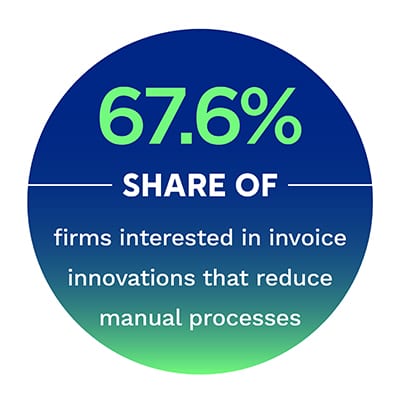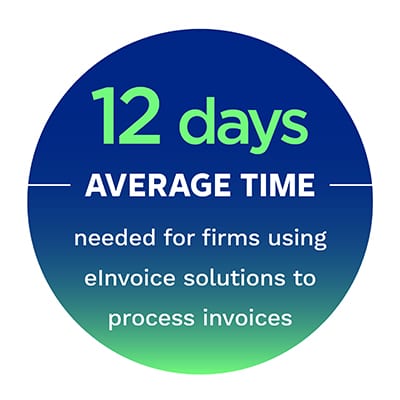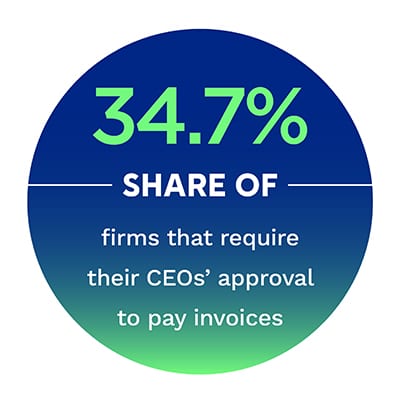The Invoice Innovation That’s On The Roadmap Of 75 Percent Of AP Professionals

 Processing invoices is time consuming and costly. The average business requires 14.1 days and approval from two to five people in order to process a single invoice. It may even take more of each when invoice payments are particularly large or nonrecurring.
Processing invoices is time consuming and costly. The average business requires 14.1 days and approval from two to five people in order to process a single invoice. It may even take more of each when invoice payments are particularly large or nonrecurring.
It is easy to imagine how this can create problems as businesses expand. As the number of invoices piles up, so does the time and resources needed to approve them — at least in theory.
 In practice, companies start to process invoices faster somewhere around the 20,000 per-month mark. Recent PYMNTS research shows that businesses that handle high invoice volumes take an average of just 11.6 days between the moment an invoice is received to the moment it is paid.
In practice, companies start to process invoices faster somewhere around the 20,000 per-month mark. Recent PYMNTS research shows that businesses that handle high invoice volumes take an average of just 11.6 days between the moment an invoice is received to the moment it is paid.
So how are businesses that handle such massive volumes of invoices managing to process them faster than the competition?
In The Light At The End Of The Tunnel: Invoice Processing edition of the Payables Friction Playbook series, in collaboration with Corcentric, PYMNTS looks to answer these questions and more. We surveyed accounts payable (AP) professionals from 2,570 U.S. businesses to learn more about the day-in and day-out of their daily invoice operations, the types of invoice innovations they believe can benefit their firms and what they can do to help ease the transition away from legacy payment systems and pave the way to digital alternatives. This Playbook is the culmination of our research.
According to our survey, companies that process more than 20,000 invoices per month are able  to process invoices faster than others in large part because they have already invested in digital invoice solutions, or eInvoices. As much as 84.5 percent of businesses surveyed already use eInvoices to help receive, approve or make invoice payments, compared to just 68.4 percent of firms that process between 5,000 and 20,000 invoices and 64.9 percent that process between 2,000 and 5,000 invoices per month.
to process invoices faster than others in large part because they have already invested in digital invoice solutions, or eInvoices. As much as 84.5 percent of businesses surveyed already use eInvoices to help receive, approve or make invoice payments, compared to just 68.4 percent of firms that process between 5,000 and 20,000 invoices and 64.9 percent that process between 2,000 and 5,000 invoices per month.
Firms that process more than 20,000 invoices per month are also the most likely to plan on more innovations going forward, too. In fact, 73.7 percent of businesses that handle this invoice volume plan to implement invoice receipt innovations, while 69.9 percent plan to implement invoice approval and 68.4 percent plan to implement invoice payment innovations. Among firms that process between 5,001 and 20,000 per month, these figures are just 47.5 percent, 48.8 percent and 50 percent,  respectively.
respectively.
This creates a snowball effect, in which the fastest invoice processors get faster, while the laggards continuously fall behind.
The third Payables Friction Playbook provides actionable insights that can help these late-bloomers catch up and close the invoice processing gap.
To learn more about how invoice innovations can enhance efficiency and reduce costs, download the playbook.